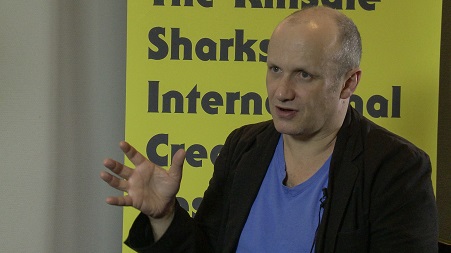SIMPLE STORYTELLING |
 |
| JOHN FANNING REVIEWS GAME CHANGERS, HOW ADVERTISING EVOLVED |
During the last few years Ive made repeated pleas, partly out of conviction, partly for divilment, not to allow anyone into the marketing communications business who didnt have a good grasp of the history of the great promotions, PR case studies and above all the great ads: like Guinness Island, voted Ad of the Century by Marketing readers.
I did so on the grounds that we can never really understand the present, let alone make any judgement about the future, without a thorough understanding of the past. Now that the Department of Education seems to have downgraded history, there is even less likelihood that anyone will listen but recent book might help alleviate the problem.
Game Changers is a big coffee table sized book showing how marketing communications has evolved since the 1950s with 300 pages illustrating 150 of the most famous Cannes Lions award winners, some of which also scored highly at the Sharks in Kinsale. The work is interspersed by 12 very short essays written by leading figures in the industry.
There are no Irish ads included but were not ignored. Sir John Hegarty, a leading knight of British advertising, is surely drawing on his Irish fathers legacy when he writes: from the beginning of civilisation weve used stories as a way of communicating, entertaining and learning – before we write anything about advertising and how technology has influenced its development, we have to understand that at its core, its storytelling.
Another essay comments on all the famous film directors who started off life directing TV commercials; Ridley Scott, Alan Parker, Richard Lester and our very own Lenny Abrahamson. The book recounts: In the same vein What Richard Did, Lenny Abrahamsons acclaimed follow-up to Adam and Paul, marked one more step in the directors progress from his Carlsberg Doesnt Do advertising campaign.
But the most bizarre Irish reference comes in an essay on the seminal Coca-Cola Hilltop ad. This idealistic anthem; Id like to build the world a home and furnish it with love was made shortly after the sixties, Woodstock and the summer of love and shows how the best marketing communications reflects the anxieties and aspirations of their time.
It would have been out of place in the greedy nineties and noughties but in one of the first essays in the book, without referencing the ad, Arianna Huffington writes that in addition to the three basic instincts, survival, sex and power, there are now signs of a fourth fuelled by social media; expanding the boundaries of our caring to include our communities and the world around us. This brings us right back to Hilltop country. The Irish connection is that the ad, written by Bill Blacker, a copywriter at McCann Erickson, was originally drafted as a radio ad on a paper napkin at Shannon Airport where Blacker was stuck during a lengthy fogbound layover. Surely that merits a plaque somewhere in Shannon? (DAAs marketing department, kindly take note – Ed).
I was also struck by some contradictory comments on the future of copywriting. One unsigned essay states that by the end of the 20th century the traditional craft of copywriting was falling out of favour and, even worse, was becoming unfashionable.
But this is contradicted by one of the great ads from the end of the century; Apples Think Different created by TBWA\Chiat\Day. The TV ad, voiced by Richard Dreyfuss, shows a succession of famous creative people of the last 100 years, from Amelia Earhart, Einstein and Picasso to Bob Dylan, Muhammad Ali and Martin Luther King.
Theres a fascinating account of the background to the ad in another essay which reveals that the accompanying voice over was crafted and re-crafted over and over again by at least half a dozen people, including Steve Jobs. He had just come back to rescue a company that was in serious trouble and this commercial is credited with having a part both internally and externally in making Apple one of the worlds most valued brands.
The end result shows that the power of great copywriting, no matter how many cooks were involved, is still as relevant as ever;
Heres to the crazy ones,
the misfits, the rebels, the troublemakers.
The round pegs in square holes
the ones who see things differently.
Theyre not fond of rules
and they have no respect for the status quo.
You can quote them, disagree with them, glorify them or vilify them,
about the only thing you cant do is ignore them.
Because they change things,
they push the human race forward,
and while some may see them as crazy ones, we see genius.
Because the people who think they can change the world
are the ones who do.
Ill leave the last word to the great Bill Bernbach, who is liberally quoted throughout the book; let us prove to the world that good taste, good art and good writing can be good selling. Game Changers is published by TASCHEN (rrp price 49.99).
 |
BEING FRANKLenny Abrahamsons talent as a director is acknowledged in Game Changers for his move from making commercials such as Carlsberg Nightclub for Owens DDB and graduating to films like What Richard Did, a tragic tale set in Dublins leafy suburbs. |









